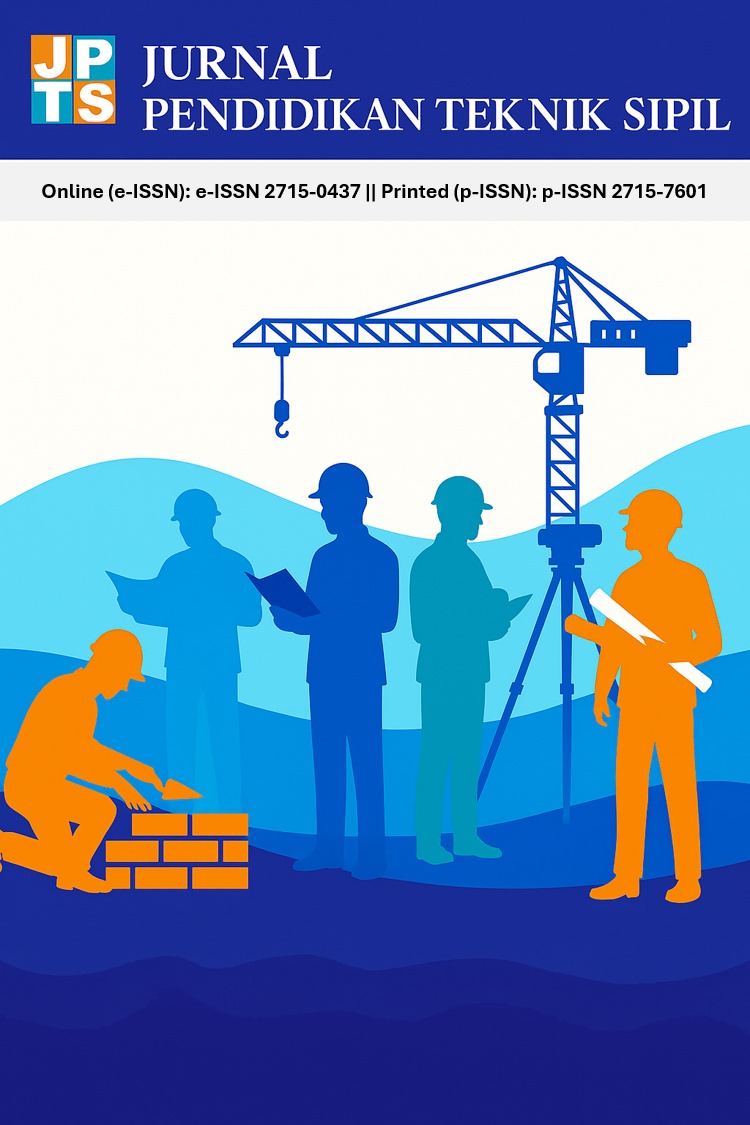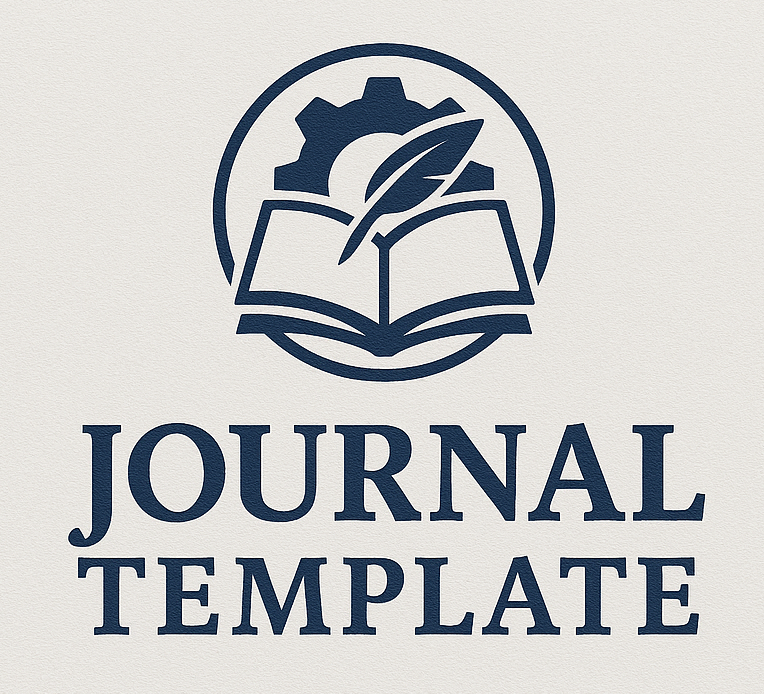Development of Construction Occupational Health Safety Teaching Module for Students of the Department of Civil Engineering and Planning Education, Universitas Negeri Yogyakarta
DOI:
https://doi.org/10.21831/jpts.v7i1.81323Keywords:
Students, Teaching Modules, K3 Construction, DevelopmentAbstract
Background: This research aims to: (1) develop a construction occupational health safety teaching module for students of the Department of Civil Engineering and Planning Education, Universitas Negeri Yogyakarta. (2 Assessing the feasibility of the learning media through assessments from material experts and media experts from the Department of Civil Engineering and Planning Education, Universitas Negeri Yogyakarta.
Methods: The research method employed is Research and Development, utilizing a 4D (Four-D) development model. This model comprises four stages of development: Define, which represents the definition stage; Design, referring to the planning stage; Development, denoting the development stage; and Disseminate, which leads to the dissemination stage. Data collection uses questionnaires, and the analysis method applied is descriptive techniques.
Results: The results of the development of the K3 Construction module are (1) The development process follows 4 stages, namely define, design, develop, and disseminate. In the definition stage, it was found that there was a problem that learning media were not available for the construction occupational health safety teaching module for students of the Department of Civil Engineering and Planning Education UNY. At the design stage, the design of the module script is done with Microsoft Word with A4 paper size (21 cm x 29.7 cm). The development stage includes validation by material experts and media experts. (2) The results of validation from material experts resulted in a score of 90.66%, categorized as "very feasible", while validation from media experts received a percentage of 90.21%, also categorized as "very feasible".
Conclusion: Media for the K3 Construction module that is suitable for use in the K3 Construction course, Department of Civil Engineering and Planning Education, Universitas Negeri Yogyakarta.
References
Arsyad, A. (2017). Educational Media (Rev.ed). Jakarta: Raja Grafindo Persada.
Danim, S. (2010). Media komunikasi pendidikan. Jakarta: Bumi Aksara.
Hanafi, I. R., Astuti, S., Rofiudin, R., & Kurniawan, H. (2024). Learning Module Development Concept. MindSet: Jurnal Manajemen Pendidikan Islam, 45-52.
Republic of Indonesia. (2003). Law of the Republic of Indonesia Number 20 Year 2003 on the National Education System. State Gazette of the Republic of Indonesia Year 2003 Number 78. Jakarta: State Secretariat.
Sugiyono. (2009). Educational Research Methods: Quantitative, Qualitative, and R&D Approaches. Bandung: Alfabeta.
Shalsabilla, T. P., & Hidayat, N. (2023). Development of a Wide Range of Geometric Areas Learning Module Based on Google Earth Pro in Geomatics Courses at the Department of PTSP FT UN. Jurnal Elektronik Mahasiswa Pendidikan Teknik Sipil (JEPTS), 11(2), 128-136.
Sumardjo, S., Pratama, G. N. I. P., & Vemantyasto, T. N. (2020). The Effectiveness of the Road Construction Cost Estimation Module on the Subject of Construction Cost Estimation at SMK N 1 Purworejo. Jurnal Pendidikan Teknik Sipil, 2(2), 104-116.
Syamsudin, R. N., Hidayat, N., Prihadi, W. R., Malik, A., & Wibowo, D. E. (2022). Development of Learning Modules for Plumbing and Sanitation Work Practice Courses in the Departement Civil Engineering and Planning Education FT UNY. Jurnal Pendidikan Teknik Sipil, 4(1), 83-93.
Widoyoko, E. P. (2012). Techniques for preparing research instruments. Yogyakarta: Pustaka Pelajar.
Wijaya, E. P., Wibowo, D. E., & Malik, A. (2024). Development of Soil Sondir Testing Learning Videos for Students of the Departement Civil Engineering and Planning Education. Jurnal Pendidikan Teknik Bangunan, 4(1), 1-14.
Downloads
Published
How to Cite
Issue
Section
License
Copyright (c) 2025 Wahyu Dwi Santoso, Dian Eksana Wibowo

This work is licensed under a Creative Commons Attribution 4.0 International License.
The journal allows the author(s) to hold the copyright without restrictions. All works license under Creative Commons Attribution 4.0 International (CC BY 4.0)













